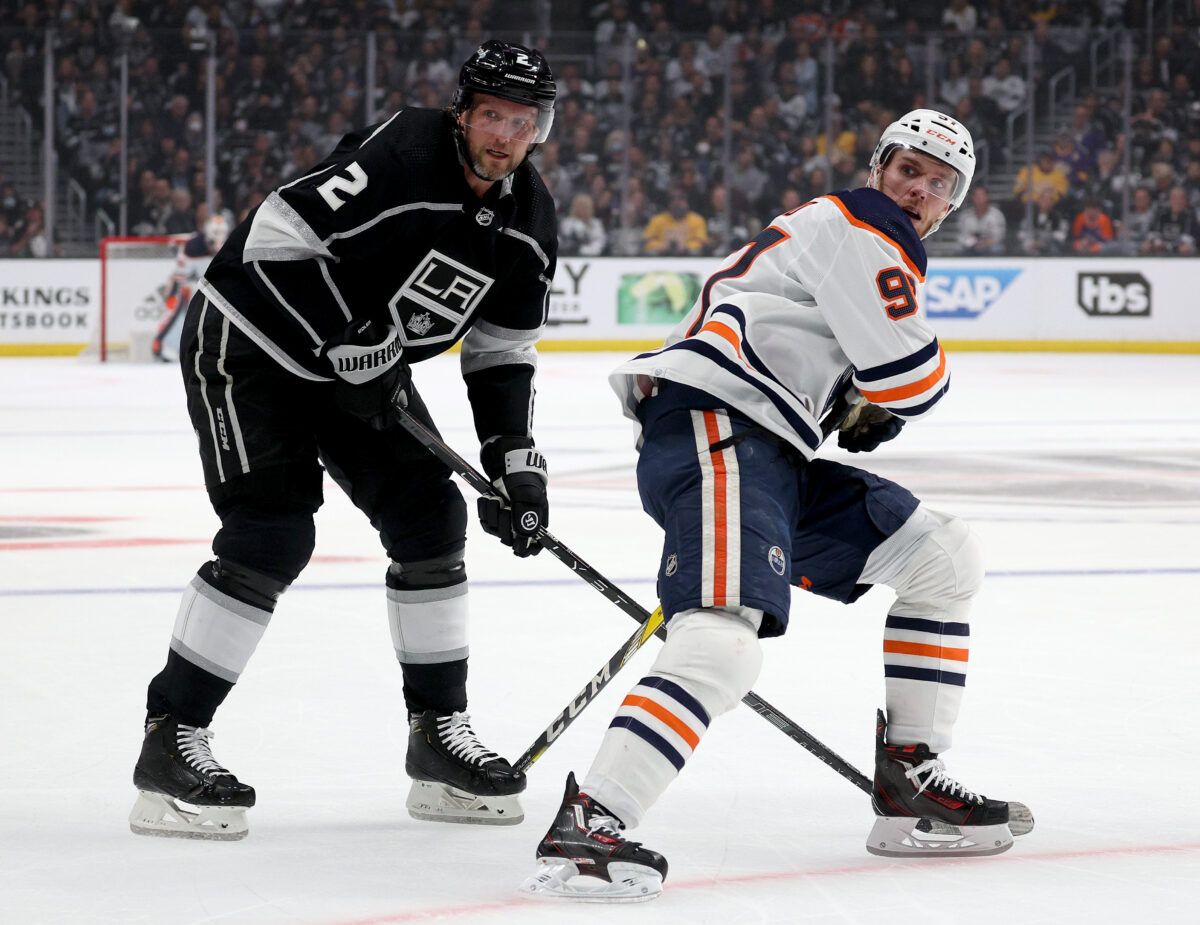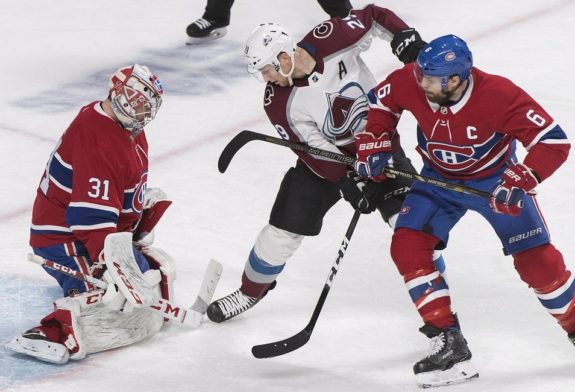The Minnesota Wild are off to a great start this preseason. The forwards are firing on all cylinders, and it’s been encouraging to see the rise of Marco Rossi, the club’s ninth-overall pick in 2020. There’s no doubt that some of the club’s top forwards—Kirill Kaprizov, Mats Zuccarello, and Joel Eriksson Ek—are going to continue to produce throughout the regular season. The Wild’s offensive production is the least worrisome. Their success is going to be determined by their defensive play.

The Wild will be tasked with finding a consistent defensive strategy that challenges the offensive talent of, say, the Colorado Avalanche, the Central Division’s juggernaut. Minnesota head coach Dean Evason made good use of the 1-2-2 neutral zone trap on more than one occasion this preseason. Though there are some around the hockey world that wince at the thought of the trap, it has the potential to give the Wild a competitive edge, especially in games where they find themselves offensively outclassed.
The Neutral Zone Trap
The neutral zone trap, or sometimes referred to as the trap, is a defensive strategy that attempts to prevent the opposition from easily moving through the neutral zone. There are two desired outcomes of playing a trap. The first is to prevent passes and create turnovers in the neutral zone. And the second is to force the opposing team to give up possession by dumping the puck. There are certainly some challenges that come with perfecting the trap, and it’s definitely not an impenetrable defensive strategy. But there’s no arguing that it’s been effective, both historically and in today’s fast-paced style of play.
There are two primary ways to the play the trap—the 1-2-2 and the 1-3-1. The general idea of the 1-2-2 trap is to have one forward chasing the puck, two forwards planted in the neutral zone, and the defensemen hanging back on their own blue line. This mucks up the neutral zone, making it difficult for the opposing team to make clean passes through the zone. The 1-3-1, on the other hand, uses one forward to chase the puck, with two forwards and one defenseman occupying the neutral zone, and a single defenseman hanging back, should a skater make it through.
It’s been argued that one major reason the 1995 New Jersey Devils, under head coach Jacques Lemaire, went on to win the Stanley Cup is because they made great use of the trap. They were not necessarily more offensively gifted than other teams around the league, but they had found a defensive scheme that suffocated their opponent. However, they’re not the only ones to do this. More recently, the Montreal Canadiens shocked the hockey world when they made it to the 2021 Stanley Cup Final (from ‘Inside the Montreal Canadiens’ shocking Stanley Cup Playoff run,’ New York Post, June 24, 2021). The Canadiens didn’t do this because they were a more talented team than those they played against. They were not. But they managed to do this because, outside of the goaltending magic of Carey Price, Montreal played an elite trap game.
It’s important to remember that the trap will not be an option for every team. Clubs find success in different ways, depending on their player personnel. But if a team does decide to play the trap, they must have the following: backchecking forwards, patient defensemen, and a responsive transition game.
Backchecking Forwards
All forwards have to be willing to backcheck. The trap will not work unless all five players are functioning as a well-oiled machine. Every player has to be aware of where they need to be at all times. If even one players loses track of where they’re supposed to be on the ice, the entire system can quickly fall apart. This is why some teams don’t really make use of this defensive strategy. It requires that even the best players in the league—such as Auston Matthews, Connor McDavid, Nathan MacKinnon, and Alex Ovechkin—put just as much effort into their defensive play as they do on their offensive play.

Functionally, every forward should be a two-way player. This is a tall order for clubs that have offensive stars who don’t always backcheck.
Patient Defensemen
The defensemen playing the trap have to be patient. They can’t allow themselves to aggressively pinch or float too far toward the boards. They need to remain close to the center of the ice, preventing the opposition from slipping into high-danger areas. These defensemen don’t have to be the best at their position, but they must be able to angle players off and lay hits when the occasion arises.
The 2021 Montreal Canadiens were largely carried on the backs of their top-four defensemen: Shea Weber, Joel Edmundson, Jeff Petry, and Ben Chiarot. None of these defensemen are the absolute best at their position, but they had the qualities that made the trap such an effective and miserable defense to play against. They were big, mean, and willing to make life miserable for the opposing forwards.
Responsive Transition Game
No team wins without scoring goals. Any team that plays the trap must be able to turn a loose puck in the neutral zone into an offensive opportunity. Each player needs to know not only where they’re supposed to be defensively, but they also need to know what they’re going to do with the puck when they get it. This approach usually favors faster forwards that can get a jump on the opposing defenseman.

Historically, the trap has been reserved for teams that find themselves outclassed on the offensive side of things. This was the case with the 1995 Devils and the 2021 Canadiens. But it doesn’t have to be this way. Using a defensive scheme that gums up the neutral zone allows for that team’s forwards to turn and get back up the ice quickly. Instead of having to retrieve dumped pucks and hope for a successful breakout pass, fast forwards have the opportunity to pick the puck off the boards in the neutral zone and get into the offensive zone as soon as possible.
This is where the Minnesota Wild come in.
The Wild’s Trap Game
The Wild are one of the teams built to play an effective trap game, and Minnesota’s coaching staff appears to believe so, too. When the club faced the St. Louis Blues in their fifth preseason game, the trap was used for most of the game. This was also a contest where the Wild played a lot of their younger players, while the Blues sent out their more seasoned talent. Though the Wild lost 4-2, their defense looked promising, and their young players got to face some of the league’s more vetted talent.
Two nights later, the Wild faced a struggling Chicago Blackhawks club. The Minnesota club switched between a 1-2-2 trap and a 2-1-2 forecheck, depending on the situation. Though the Blackhawks didn’t put up much of a fight, the Wild displayed glimmers of an elite trap game. As a result, this created turnovers in the neutral zone, creating excellent offensive opportunities. The old adage holds true: great defense leads to great offense. This has especially been the case for the Wild this preseason.
These offensive opportunities do not crop up unless the Wild’s defensemen are playing a patient game, and that’s exactly what they’ve managed to do. They are not too quick to pinch in the offensive zone, and their angling and positioning has been great. The defensive veterans on the team, such as Jared Spurgeon, Jonas Brodin, and Matt Dumba, are going to be the cornerstone of the club’s success this season. The big challenge for this club is going to be playing a disciplined game and staying out of the penalty box.
Of course, offensive opportunities don’t mean much if the offense can’t execute. The Wild have already demonstrated that their forwards can be lethal when the chemistry is there. The club’s top unit, featuring Zuccarello, Kaprizov, and Rossi, was an absolute force in their last preseason game against the Blackhawks. If that level of engagement and execution continues, it’s going to be difficult for any defense to stop them.
The Minnesota Wild have the player personnel to cause defensive havoc by playing the trap this season. However, there are those who believe that the trap slows down the game, and makes everything about the game of hockey less entertaining. But NHL players are ultimately paid to win games. If those wins come in the form of an aggressive battle in the neutral zone, so be it. It is better for the Wild to win messy games than to get blown out by an opposing playmaker making the highlight reel.